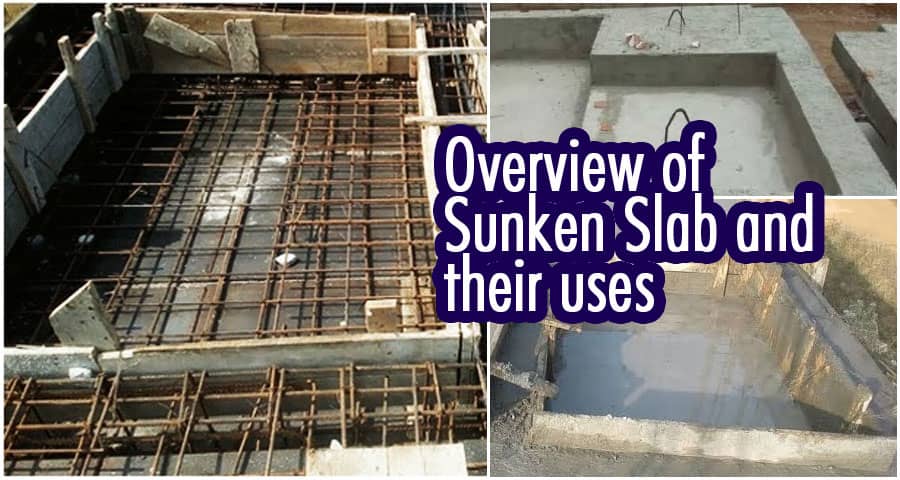Detail Overview of Sunken Slab and their uses

Sunken slabs are a type of concrete slab that is installed below the ground level. They are commonly used in areas that require a flat and stable surface, such as garages, basements, and parking lots.
What is a Sunken Slab?
A sunken slab is a concrete slab that is installed below the ground level. It is typically poured directly onto the soil and reinforced with steel bars to provide additional strength. The edges of the slab are then supported by foundation walls or footings to prevent settling or cracking.
Uses of Sunken Slabs
Sunken slabs have a wide range of uses, including:
- Garages and Carports: Sunken slabs are commonly used in garages and carports to provide a flat and stable surface for vehicles to park on. They are particularly useful in areas with soft or unstable soil, as they can prevent the vehicles from sinking into the ground.
- Basements: Sunken slabs can be used in basements to provide a level surface for storage or living space. They can also be used as a foundation for the rest of the building, providing a solid base for the walls and roof.
- Patios and Walkways: Sunken slabs can be used to create patios and walkways that are level with the surrounding ground. This can create a seamless transition between the indoor and outdoor living spaces.
- Drainage: Sunken slabs can be used to create drainage channels that direct water away from the building. This can help to prevent water damage and flooding.
Advantages of Sunken Slabs
There are several advantages to using sunken slabs, including:
- Stability: Sunken slabs are more stable than traditional concrete slabs because they are installed below the ground level. This can help to prevent settling, cracking, and other types of damage.
- Versatility: Sunken slabs can be used in a wide range of applications, from garages and basements to patios and walkways. This makes them a versatile solution for many different types of projects.
- Drainage: Sunken slabs can be used to create drainage channels that direct water away from the building. This can help to prevent water damage and flooding.
Disadvantages of Sunken Slabs
There are also some disadvantages to using sunken slabs, including:
- Cost: Sunken slabs can be more expensive to install than traditional concrete slabs because they require additional excavation and reinforcement.
- Complexity: Sunken slabs can be more complex to install than traditional concrete slabs because they require additional planning and preparation.
- Maintenance: Sunken slabs may require more maintenance than traditional concrete slabs because they are installed below the ground level and are therefore more susceptible to moisture and other types of damage.
Conclusion
Sunken slabs are a versatile and stable solution for many different types of construction projects. They are commonly used in garages, basements, and other areas that require a flat and stable surface. While they may be more expensive and complex to install than traditional concrete slabs, their advantages often outweigh their disadvantages. If you are considering using a sunken slab for your next project, be sure to consult with a professional to ensure that it is the best solution for your specific needs.
FAQs
What is a sunken slab?
A sunken slab is a concrete slab that is installed below the ground level.
What are some common uses for sunken slabs?
Sunken slabs are commonly used in garages, basements, patios, walkways, and for drainage.
What are the advantages of using sunken slabs?
The advantages of using sunken slabs include stability, versatility, and drainage.
Are sunken slabs more expensive than traditional concrete slabs?
Yes, sunken slabs can be more expensive to install than traditional concrete slabs due to additional excavation and reinforcement requirements.
Do sunken slabs require more maintenance than traditional concrete slabs?
Yes, sunken slabs may require more maintenance than traditional concrete slabs because they are installed below the ground level and are therefore more susceptible to moisture and other types of damage.
